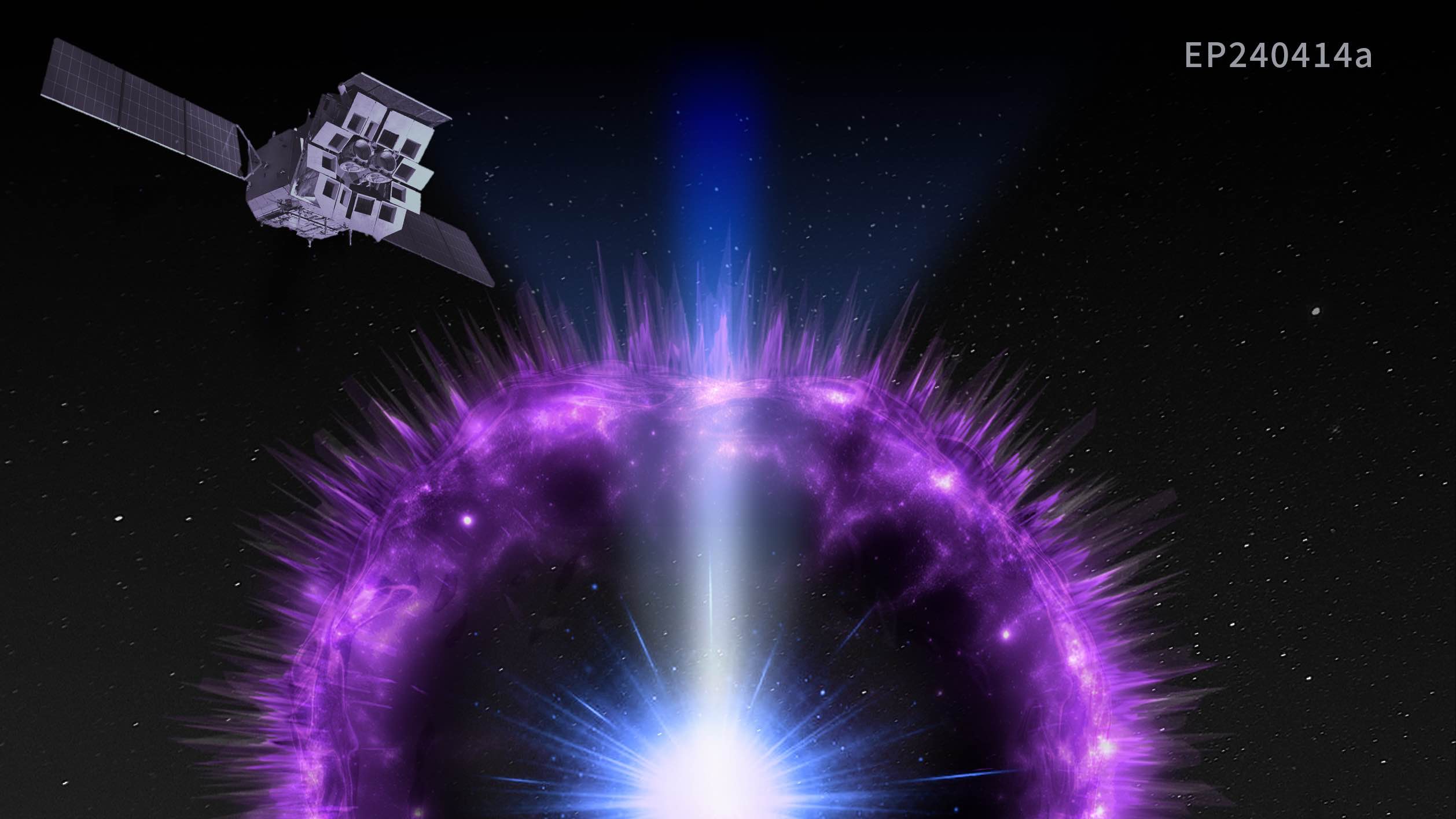Einstein Probe Unveils New X-ray Transient Linked to Supernovae
China's Einstein Probe (EP) astronomical satellite has identified a new category of cosmic explosions—faint, fast X-ray transients accompanying the death of massive stars. The satellite's first-of-its-kind detection of transient source EP240414a, a mysterious 150-second X-ray flare from a collapsing star 4 billion light-years away, challenges existing theories of stellar demise and reveals a hidden population of stellar explosions. The breakthrough findings appear in Nature Astronomy on June 26, 2025.
Follow-up observations across X-ray, optical, and radio wavelengths confirmed that EP240414a later associated with a broad-lined Type Ic supernova, SN 2024gsa. Crucially, the team discovered the presence of a weak relativistic jet—a collimated, mildly relativistic outflow like those seen in gamma-ray bursts (GRBs) but with lower velocity and energy.
Thanks to Einstein Probe's wide-field coverage and exceptional sensitivity, the research team successfully captured the faint jet-driven X-ray emission during the initial phase of the outburst, enabling precise tracking of the dynamical evolution as the jet interacted with circumstellar material. These observations provide crucial evidence for understanding both jet formation mechanisms and the underlying physics of supernova explosions.
This discovery bridges the gap between traditional supernovae and powerful GRBs, revealing a previously undetected class of cosmic explosions. The event occurred on the outskirts of its host galaxy, suggesting it may belong to a rare category of fast X-ray transient linked to the collapse of Wolf-Rayet stars—late-stage massive stars stripped of their outer hydrogen layers.
"These fast X-ray transients are like cosmic fireworks—bright and fleeting, making them extremely challenging to detect," said Professor He Gao of Beijing Normal University, the paper’s lead corresponding author. "They resemble ‘gentler versions’ of gamma-ray bursts and might be far more common than we thought. Past missions simply missed them due to limited X-ray monitoring capabilities."
"This marks Einstein Probe’s first discovery of an X-ray transient linked to a supernova, opening a new era in time-domain high-energy astrophysics," added co-corresponding author Professor Xiaofeng Wang of Tsinghua University. "These findings were made possible through close international collaboration."
Launched on January 9, 2024, Einstein Probe is designed to hunt for transient cosmic phenomena. Its revolutionary lobster-eye micro-pore optics provide an unprecedented combination of wide-field coverage (1/11th of the entire sky, equivalent to 18,000 full moons) and high sensitivity, outperforming the in-orbit all-sky X-ray monitors by 1–2 orders of magnitude. This technological breakthrough enables EP to efficiently monitor the dynamic X-ray universe and detect faint, fast transients that were previously beyond our observational reach.
"EP240414a showcases Einstein Probe’s ability to uncover new cosmic phenomena," said Dr. Weimin Yuan, EP’s Principal Investigator at the National Astronomical Observatories, Chinese Academy of Sciences and co-corresponding author. "We anticipate many more discoveries about the extreme universe in the future."

The rest-frame peak energy and isotropic energy correlation (Amati relation). EP240414a is a significant outlier compared with
classical GRBs and some low-luminosity GRBs.

Optical and NIR light curves of SN 2024gsa. Keck Telescope spectroscopy obtained 20 days after discovery confirms
SN 2024gsa as a broad-lined Ic supernova

Artistic Illustration of EP240414a (Credit: OPENVERSE/EPSC)
Publication Details:
Title: "A fast X-ray transient from a weak relativistic jet associated with a type Ic-BL supernova"
Journal: Nature Astronomy
DOI: https://www.nature.com/articles/s41550-025-02571-1
Release Date: June 26, 2025